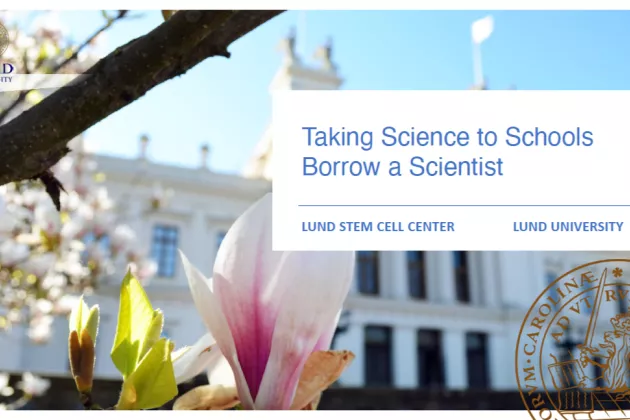In March 2025, nine researchers from the Center visited more than 100 students at Malmö Latinskola, Filbornaskolan in Helsingborg, and Söderportgymnasiet in Kristianstad. The sessions offered an introduction to stem cell research and a chance to explore the ethical and legal issues that often accompany scientific discovery.
The program, which was first launched in 2019 by the Research School in Stem Cell Biology, is part of a broader national effort to make research more accessible to the public. Sweden’s Borrow a Researcher initiative, which allows schools and organizations to host researchers for talks and discussions, was recently recognized as a national best practice in public engagement in Research & Innovation by the EU Commission.
At the Lund Stem Cell Center, our Research School in Stem Cell Biology has adapted this model to focus specifically on stem cell biology and regenerative medicine, and the experiences of researchers working in the field. Doctoral students participating in our Professional Development Program played a key role in the "Borrow a Scientist" initiative's return to local classrooms.
From Bench to Blackboard
Schools unable to attend this year’s UniStem Day were prioritized for these in-person visits. During each two-hour session, researchers shared their career paths, discussed ongoing projects, and encouraged students to ask questions, not just about science, but about what it’s like to work as a scientist.
The participating researchers represented a wide range of scientific specialties. Among them were Kerstin Laurin, Abigail Altman, Hanna Eriksson, Chandramouli Muralidharan, Tyra Bremborg, Laura Rabanal Cajal, Magdalena Madej, Yogita Sharma, and Sara González Antón.
For them, the experience was just as rewarding as it was for the students.
“We had a great two hours with the students talking about stem cells and our work,” explains Kerstin Laurin, a doctoral student in the Developmental and Regenerative Neurobiology group and one of this year’s organizers. “The highlight for me was when we showed them material we had brought from the lab. Explaining in smaller groups really sparked their interest and questions, and I wish we’d had more time!”
A Spark of Curiosity
As plans take shape for the next round of school visits, the aim is to strengthen the connection between science and society, making research more visible, understandable, and accessible.
“Through these visits, our researchers spark curiosity about science and give the high school students a chance to see what real scientists are like, making it easier for them to imagine themselves as scientists in the future,” highlights Jenny Hansson, board member of the Research School in Stem Cell Biology, and co-organizer of the Taking Science to Schools – Borrow a Scientist Initiative.






